Latest Review

Review: VW Beetle
Remember Peter Weir’s The Cars That Ate Paris? Evidently VW doesn’t.
Remember Peter Weir’s The Cars That Ate Paris? Evidently VW doesn’t.
At the latest model’s local launch, the presentation included a menagerie of Beetle movie montages … without a single reference to the 1974 Aussie classic.
For those not into low-budget camp horror, an early Bug brandishing spiky armour sets out for Vee Dub The Impaler-style revenge on the eponymous NSW town’s murderous residents.
Now, VW’s oversight is ironic, because butching up the modern Beetle’s twee image was priority die nummer eins for this, only the third in 75 years.
To that end, VW has fashioned a longer, lower, and proportionally truer post post-modern Beetle to the rear-engined Type-1 original.
Minus the spikes, of course.
Both a ’60s example and a Baja beach buggy served as muses for the Wolfsburg designers during the Bug’s 2008 development.
Maybe that’s why the now-steel (instead of plastic) guards can be unbolted.
Inside, the winning American proposal continues with the aggressive retro evolution.
From the slabby dash, with its quaint lidded compartment, to the ceiling curvature and upright windscreen that’s no longer on the distant horizon, the result is more Beetle-mania; less Beetle-feign-ier.
Hard plastics still predominate, but VW’s well-oiled switchgear ups the Bug’s ambience away from its predecessor’s scratchy cheapness.
The seats, driving position, ventilation, ergonomics, and instruments are all first class; the repositioned pillars offer improved vision; there’s no more vase; and that weird windscreen-fishbowl effect is history.
In true old-school Beetle Deluxe fashion, the 118TSI is quietly loaded, with climate control, Bluetooth phone/audio streaming, parking sensors, cruise, cornering lights, a hatch spoiler, and 17-inch alloys.
Underscoring the Beetle’s newfound maturity is VW’s rorty 118TSI Twincharger drivetrain, starring a seamless turbo and supercharger double-act, for stirring step-off performance, and supported by a sizeable torque band to help hit the overtaking high notes with ease.
While most buyers will happily settle for the snappy seven-speed DSG – featuring hill-start assist for fewer jerky take-offs – VW’s seemingly Teflon-coated six-speed manual is just a joy, and backed up by beautifully measured clutch and braking actions.
But this latest Love Bug lovefest hits stormy waters the moment the smooth road surface wavers.
Question. Why has the Beetle just caught up with the 2003 Golf V’s PQ35 platform … minus its sophisticated multi-link rear end?
While the steering and front end are willing tools that a keen driver can call upon to accurately point and shoot with, the torsion beam rear fidgets like a surly teen on anything less than the very best billiard-table bitumen.
Even on the standard 17s, both the body control and ride lack discipline and suppleness when pushed.
Why buyers of VW’s heritage icon are treated so contemptuously is baffling.
Still, the vastly improved Beetle is a likeable car.
Our advice is to stick to 17s and smooth roads, or buy a Golf and a ’70s Superbug classic with the change.
News
-
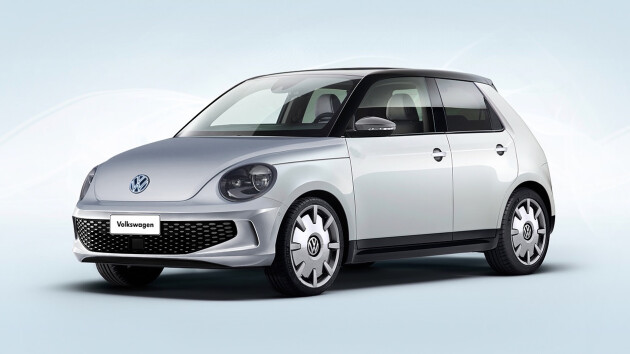 News
NewsVolkswagen boss hints at electric Beetle
The car that launched Volkswagen could return with a motor driving the rear wheels
-
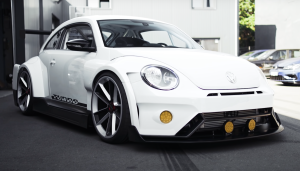 News
NewsVolkswagen Beetle transformed into Gran Turismo Sport Gr.3 race spec
JP Performance and Prior Design have completed a real-life replica of the VW Beetle Gr.3 from Gran Turismo Sport – and it looks race ready
-
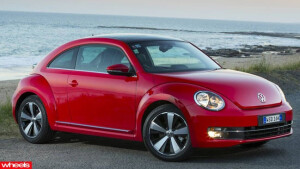 News
NewsVolkswagen recalls 2012-16 Beetle over airbag inflation issue
Potential issue not related to worldwide Takata recall
-
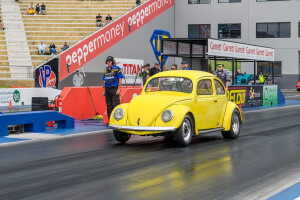 Features
FeaturesHenry Spicak's 1956 VW Beetle
We caught up with Henry and his eleven-second V-Dub at Summernats Slam
-
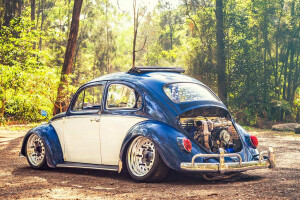
Turbocharged 1967 Volkswagen Beetle 1300 Deluxe
-
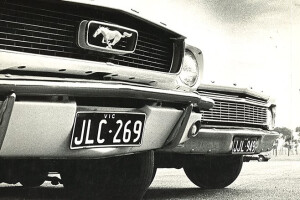
The forgotten Aussie-built heroes
-

Final VW Beetle rolls off the line
-
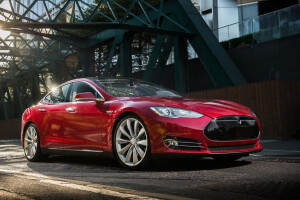
Top 15 cars that revolutionised the automotive industry


